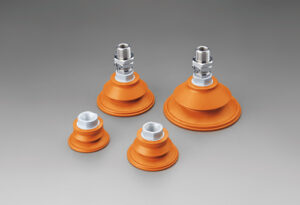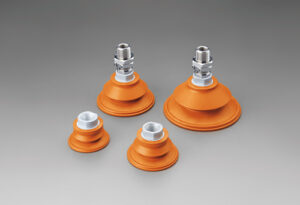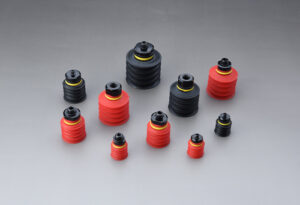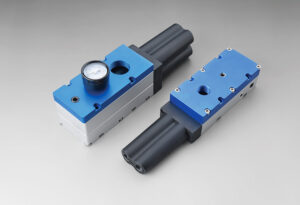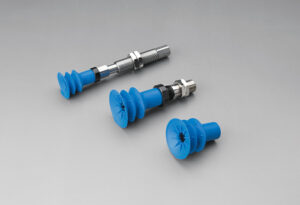Introduction
In the manufacturing world, the clamping of workpieces is essential for ensuring accuracy and precision in the final product. Traditionally, clamping is done using mechanical clamps, vises, and fixtures. However, the limitations of these methods have led to the development of alternative clamping methods, such as vacuum suction cups. In this article, we will explore the use of vacuum suction cups in manufacturing and their potential to replace traditional clamping methods.
Key Points to Discuss
Limitations of Traditional Clamping Methods
Mechanical clamping methods have been used in manufacturing for a long time, but they come with their limitations. For instance, mechanical clamps and fixtures are often bulky, making them difficult to use on intricate parts. Additionally, they can deform or damage fragile materials, leading to inaccuracies and imperfections in the final product.
Introduction to Vacuum Suction Cups
Vacuum suction cups create a seal between the cup and the workpiece, creating a secure hold that is strong enough to keep the workpiece in place. Vacuum suction cups are highly versatile, as they can be used on various surfaces, including glass, plastic, and metal. They are also exact, allowing for accurate placement and alignment of workpieces.
Advantages of Vacuum Suction Cups
Vacuum suction cups offer several advantages over traditional clamping methods. They are highly repeatable, meaning they can be used multiple times without losing grip strength. Additionally, they are highly accurate, ensuring that workpieces are held in the correct position during manufacturing. Vacuum suction cups are also much more lightweight and compact than traditional clamps and fixtures, making them easier to handle and store.
Vacuum suction cups offer a highly effective alternative to traditional clamping methods in manufacturing. They are exact, versatile, and provide several advantages over conventional methods. By considering the limitations of traditional clamping methods and the benefits of vacuum suction cups, manufacturers can make an informed decision when choosing their clamping methods.
Limitations of Traditional Clamping Methods
Traditional clamping methods have been used in manufacturing for a long time, but they come with their limitations. Here are some of the fundamental limitations:
1.Bulky and Difficult to Use on Intricate Parts
Mechanical clamps and fixtures are often bulky, making them difficult to use on intricate parts. This limits their use in situations where a high level of precision is required.
2.Deformation or Damage to Fragile Materials
Mechanical clamps and fixtures can deform or damage fragile materials, leading to inaccuracies and imperfections in the final product. This is especially true for delicate fabrics such as glass.
3.Limited Versatility
Traditional clamping methods are often designed for use on specific materials or parts. This limits their versatility and makes using them in various applications challenging.
4.Limited Repeatability
Traditional clamps and fixtures can lose grip strength over time, limiting their repeatability. This means they can only be used as many times as vacuum suction cups without losing effectiveness.
These limitations have led to the development of alternative clamping methods, such as vacuum suction cups.
Advantages of Vacuum Suction Cups
Vacuum suction cups have become increasingly popular in manufacturing due to their many advantages. Here are some of the key benefits of using vacuum suction cups:
1.Working Principle
Vacuum suction cups use a vacuum to create a seal between the cup and the workpiece. The mug is connected to a vacuum pump, which removes the air between the cup and the workpiece. This creates a vacuum seal, holding the workpiece securely in place.
2.Reusability
One of the most significant advantages of vacuum suction cups is their reusability. Unlike mechanical clamps and fixtures, vacuum suction cups do not deform or damage the workpiece, allowing them to be reused multiple times without losing effectiveness. This can lead to significant cost savings over time.
3.High Precision
Vacuum suction cups are exact, allowing for accurate placement and alignment of workpieces. This precision is essential in applications where a high level of accuracy is required, such as in the manufacturing of electronics or medical devices.
4.Versatility
Vacuum suction cups can be used on various surfaces, including glass, plastic, and metal. This makes them highly versatile, allowing them to be used in various manufacturing applications.
5.Speed and Efficiency
Vacuum suction cups can be used to hold workpieces in place quickly and efficiently. This can lead to increased productivity and reduced production time.
Overall, the advantages of vacuum suction cups make them a beautiful alternative to traditional clamping methods. By using vacuum suction cups, manufacturers can achieve higher precision, efficiency, and versatility in their manufacturing processes.
Introduction to Various Vacuum Suction Cups
Many different types of vacuum suction cups are available, each with unique features and applications. Here are some of the most common types of vacuum suction cups:
1.Contact Suction Cup
Contact suction cups, also known as flat suction cups, are designed to contact the workpiece directly. They are typically used for holding flat or slightly curved surfaces, such as sheets of metal or plastic.
2.Industrial Suction Cups
Industrial suction cups are designed to be used in more demanding environments, such as manufacturing heavy machinery or construction materials. They are typically made from more durable materials and can hold heavier loads.
3.Vacuum Suction Cups for Glass
Vacuum suction cups for glass are explicitly designed for use with glass materials. They are typically made from materials that are less likely to scratch or damage the glass, such as silicone or rubber. They may also have specialized features, such as a reduced gripping force to prevent cracking or breaking the glass.
When choosing a vacuum suction cup, it is essential to consider the specific application and requirements. Contact suction cups are ideal for holding flat or slightly curved surfaces, while industrial suction cups are better suited for heavier loads and more demanding environments. Vacuum suction cups for glass are explicitly designed for use with glass materials and can help prevent damage or breakage. Manufacturers can ensure maximum efficiency, productivity, and safety in their manufacturing processes by selecting the correct type of suction cup for the application.
Applications of Vacuum Suction Cups in Manufacturing
In recent years, vacuum suction cups have gained popularity in the manufacturing industry as a replacement for traditional clamping methods. This section explores the various applications of vacuum suction cups in manufacturing.
1.Replacing Traditional Clamping Methods
Traditional clamping methods, such as mechanical clamps and vises, have limitations in terms of flexibility and speed. Vacuum suction cups offer a non-invasive, flexible, and quick solution to clamping materials of different shapes and sizes. They can hold fabrics for cutting, drilling, polishing, and assembly operations.
2.Real-life Case Studies
Several real-life examples demonstrate the effectiveness of vacuum suction cups in manufacturing. For instance, a company that produces wooden furniture replaced their traditional mechanical clamps with vacuum suction cups. The suction cups allowed them to hold the wooden panels firmly without causing any damage to the surface. This increased production efficiency by 30% and reduced material waste by 20%.
Another case study involves a glass manufacturing company that used vacuum suction cups to lift and move large glass sheets. Using suction cups reduced the risk of glass breakage and injuries to workers. This also improved the manufacturing process’s speed and allowed the company to produce larger glass panels.
Using vacuum suction cups in manufacturing has been shown to provide several benefits, such as improved efficiency, reduced material waste, and increased worker safety.
Choosing and Maintaining Vacuum Suction Cups
When choosing and maintaining vacuum suction cups, several important factors must be considered. This section will provide some advice and guidelines to help you make informed decisions.
Choosing Vacuum Suction Cups
1.Size and Shape
The size and shape of the vacuum suction cup should match the surface area and curvature of the object being lifted. Choosing the wrong size or shape could reduce suction power and damage the thing.
2.Material
The material of the vacuum suction cup should be selected based on the object being lifted and the environmental conditions in which it will be used. For example, if the thing is made of glass, a cup with a soft, pliable material may be required to avoid scratching the surface.
3.Weight Capacity
Consider the object’s weight being lifted and choose a vacuum suction cup with a weight capacity that exceeds that weight. This ensures the cup can safely lift and hold the thing without slipping.
Maintaining Vacuum Suction Cups
1.Cleaning
Regular cleaning of the vacuum suction cups is essential to maintain suction power. Use a mild detergent and warm water to clean the cups, making sure to remove any dirt or debris that may be present.
2.Inspection
Inspect the vacuum suction cups before each use to ensure no cracks, cuts, or other damage that could affect their suction power. Replace any cups that are damaged or worn.
3.Storage
Proper storage of vacuum suction cups is also essential to maintain suction power. Store them in a cool, dry place, away from direct sunlight and other heat sources. Avoid stacking them on top of each other or placing heavy objects on top of them.
By following these guidelines, you can ensure that your vacuum suction cups are selected and maintained correctly, which will help to maximize their suction power and extend their lifespan.
Conclusion
Vacuum suction cups are a viable replacement for traditional clamping methods in the manufacturing industry. Vacuum suction cups offer numerous advantages over conventional clamping methods, including higher precision, versatility, and lower cost. Manufacturers can improve production efficiency and reduce costs by using vacuum suction cups.
When selecting vacuum suction cups, it is essential to consider factors such as material compatibility, load capacity, and shape. Proper maintenance, such as cleaning and regular inspections, can also ensure the longevity and reliability of the suction cups.
Overall, vacuum suction cups provide a promising solution for manufacturers seeking to improve their production processes. By utilizing this technology, manufacturers can achieve higher efficiency and cost savings and enhance their product quality and consistency.



